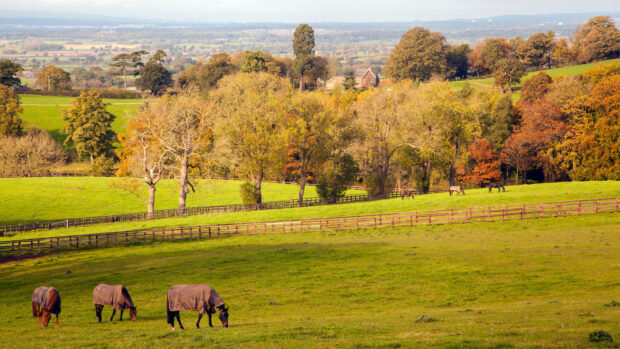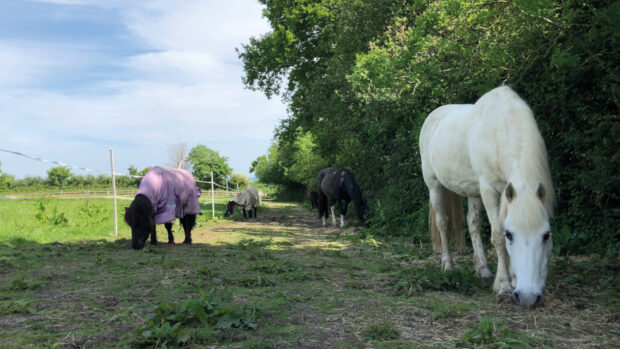Contrary to popular belief, it isn’t just plump ponies who gorge themselves on lush spring pasture that suffer from laminitis. This crippling and painful disease can easily strike large horses, if they are not managed correctly.
The overweight horse: Blonag is a six-year-old 16hh part-Thoroughbred, part-Irish Draught, who is currently on box rest after suffering her first ever bout of laminitis. Her current weight is 600kg and her optimum weight is 560kg. Her condition score is four out of five. Her diet is 7.5kg hay plus water. Blonag is stabled on shavings and has started chewing the wood of her stable, during her box rest.
An equine nutritionist recommends:
Blonag’s body condition must be monitored on a regular basis. I would suggest that she is condition scored every fortnight with the aim of reducing the score to just below three out of five. A weightape is also a useful tool to help detect more subtle changes, although it needs to be used at the same time of day each time because a horse’s body shape will fluctuate throughout the day.
Once Blonag has recovered from the laminitis and the vet feels that she can begin to work again, her exercise should be gradually increased to help control her weight.
Turning her out wearing a grazing muzzle may be better than stabling her for long periods because she would be getting more exercise in the field. If she is stationary for long periods her metabolic rate will fall making it harder for her to use up calories.
The “mesh” or “basket” type muzzles are preferable to the old “bucket” type because she would still be able to graze through it, although it will be much harder work for her. However, do make sure that she can drink properly when wearing a muzzle before leaving her with it on.
The flush of grass growth in spring and autumn are well-known risk factors for laminitics, but frosty winter pasture should also be avoided. Recent research suggests that the fructan concentration in grass is higher at this time. If you do need to turn out on frosty grass then hay should be provided to discourage her from eating the grass until it has thawed.
It is very important that Blonag loses weight gradually. Although fibre intake will need to be restricted, it is vital that sufficient fibre is fed to maintain good digestive function and reduce the risk of stereotypic behaviour such as wood chewing. Research has shown that horses on low fibre diets spent significantly more time engaged in oral stereotypes such as woodchewing.
As the mare is currently stabled she will be reliant on her hay for fibre. With an optimum weight of 560kg, Blonag will need a minimum of 8.5kg of hay per day to meet her fibre requirements. Therefore the quantity of hay she is receiving daily needs to be increased.
Generally soft, leafy meadow hays have a higher feed value that the late cut, stalky seed hays, while a hay analysis will offer more detailed information. Soaking hay for 12 hours before feeding will help reduce its energy and protein content, which means more can be fed without promoting weight gain, as well as reducing the airborne dust and mould spores which may be contributing to the cough.
Placing two small holed haynets on opposite sides of the stable will slow down the rate of eating and keep her occupied for longer, as will using two haynets, one inside the other.
Although calorie intake needs to be restricted it is important that sufficient levels of vitamins and minerals are provided. Feeding a small amount of low calorie, low sugar chaff with a broad-spectrum vitamin and mineral supplement, or a feed balancer that is concentrated in vitamins and minerals, will provide the necessary nutrients.
Digestive aids, such as Yea-Sacc, help to enhance fibre digestion and maintain a healthy gut microflora, thereby reducing the risk of digestive disturbances such as laminitis or colic.
Herbal supplements, particularly those containing added antioxidants, may help to improve the health of Blonag’s respiratory system. Several herbs including garlic, aniseed, horehound and hyssop are renowned for their beneficial action on the respiratory system.



